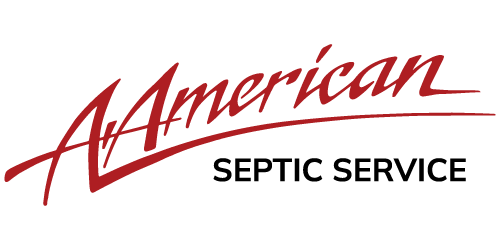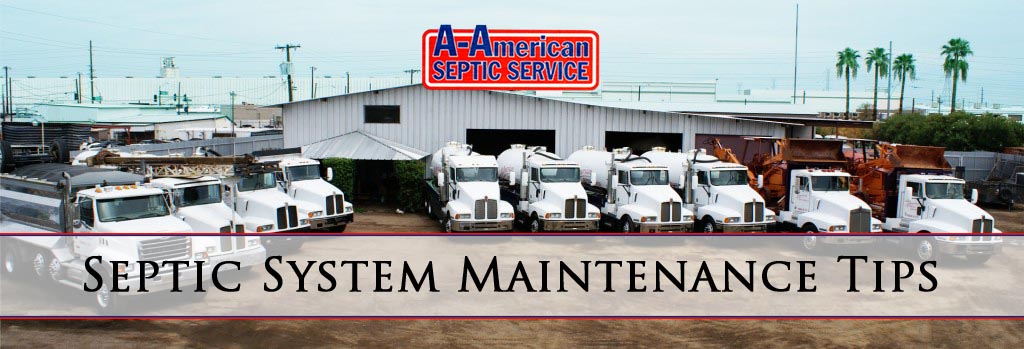Leach fields and septic tanks are permanent and viable wastewater management systems if they are properly designed, manufactured, and maintained. Septic system maintenance is mainly removing the sludge from the tank periodically. Every 3 years the scum and sludge layer needs to be inspected. The septic tank needs to be pumped when the scum layer is within 3 inches of the outlet pipe bottom, or when the distance between the top of the sludge and the outlet pipe bottom are within the bottom limits listed below:
| Volume of the Septic Tank | 3 Feet | 4 Feet | 5 Feet |
| 800 Gallon | 6 Inches | 10 Inches | 13 Inches |
| 1,150 Gallon | 4 Inches | 6 Inches | 8 Inches |
| 1,500 Gallon | 4 Inches | 4 Inches | 6 Inches |
Septic System Do’s and Don’t’s
Additionally, septic system users need to follow the basic rules to make sure that it operates correctly. If septic tank problems are not rectified right away, it could be very costly to the homeowner.
DO:
- Reduce water amount used during spring and winter when groundwater levels are high.
- Inspect and pump the septic tank every 3 years.
- Conduct percolation tests during wet weather season before you install a new system.
- Minimize or eliminate using garbage disposals. This adds more water and solids to the septic system.
- Keep records of when you get your septic tank serviced or pumped.
- Use liquid detergent, powdered detergents use a type of clay that could cause problems.
- Check any pumps or movable parts regularly.
- Know where your septic tank is located.
- Have access to your septic tank cover. It’s a good idea to place an object (decorative rock, birdbath, etc.) over the cover for easier locating.
- Use water saving equipment and appliances.
- Call a professional when you suspect problems in your septic system.
- Fix leaky faucets, toilets, showers and tubs.
- Make sure your water softener isn’t releasing excess water to your septic tank.
- Try and divert rain water away from the drain field.
- Keep trees and shrubs away from the drain field.
DON’T:
- Pour motor oil into the septic tank.
- Flush non-biodegradable or semi-biodegradable items into the septic tank which include writing paper, paper towels, cat liter, rags, newspapers, or disposable diapers.
- Flush large amounts of bleach or lye products into the tank. However normal use will not harm the bacteria.
- Wash the sides of the septic tank when it is pumped. The remaining slime has bacteria that will digest the waste water.
- Connect yard or roof drains to the septic tank. Extra water will flood the tank and leach field.
- Discharge salt water waste from water softeners into the septic tank. The high salt content will clog soil pores.
- Construct a leach filed close to another leach field. The soil will be too wet and both systems will fail.
- Add potassium hydroxide or sodium hydroxide to the tank. The chemicals will affect the solid settling and cause some of the sludge to enter the leach field.
- Plant vegetation that requires a lot of water on top of the leach field.
- Construct a leach field near fractured bedrock, on flood plains, on steep slopes, or in impervious soils.
- Place heavy objects like swimming pools or drive vehicles over the leach field or septic tank. Additionally, stakes for plants and supports for swingsets do not need to be near leach fields of septic tanks.
- Discharge water from washing machines on the ground surface or leach field. The water will contain chemicals and bacteria that will contaminate surface waters and cause a health hazard. The wastewater also has soap scum and fine solids which clog soil pores. If the existing septic system doesn’t accept the washing machine water, then a separate septic tank and leach field will need to be installed.
- Plant medium or small sized trees within 10-20 feet of a leach field. The roots will clock the pipeline.
- Ever go inside your septic tank.
- Attempt to open your septic tank, as it contains bacteria and gasses, always call a professional.
Common myths about your septic system:
People who didn’t grow up with septic systems many times aren’t aware of what it takes to own, operate, maintain, or repair a septic system. Here are some commonly held misconceptions about septic systems and the facts about each:
Septic systems never need to be replaced.
Septic systems need to be maintained including pumping the septic tank every 3 years and the leach field needs to be replaced. A properly designed, installed, and maintained leach field will need to be replaced every 15-30 years. A leach field that isn’t properly designed or installed or has poor maintenance, will require it to be replaced before 15 years. The maintenance requirement is very similar to replacing a water heater or roof. Additionally, the leach field has to be expanded. If the septic tank is pumped more than once every 3 years, then you need a new septic system.
Flushing buttermilk or yeast into the tank will eliminate the need for it to be pumped.
It is common to flush organic materials into a septic tank that aren’t used often. The organic materials serve as food for the bacteria during extended time when there isn’t wastewater being pumped into the tank. This material doesn’t help or hinder the operation of the septic system. The yeast or buttermilk doesn’t do anything to non-biodegradable materials, so the tank will need to be pumped to prevent clogging in the leach field.
Washing machine water needs to be discharged to the ground surface to protect the leach field.
The water from a washing machine will have bacteria from clothing and it will contaminate the surface streams. Not to mention that the soap residue will clog the soil pores and could kill off vegetation. Water from a washing machine is wastewater and needs to be treated and disposed of the same way as shower water is.
If the septic tank is failing, flushing with lots of water will help.
Septic system failure is often caused by clogged soil pores or too many solids in the tank. Flushing the tank will cause the solids to be forced into the soil absorption system and cause damage to the leach field. Flushing water into a clogged leach field causes saturation and prevents oxidation.
Using lye products weekly will clean the plumbing and septic tank.
Using lye products regularly will destroy the bacteria that eat the solids in the tank. Using lye products will cause the septic tank to be pumped several times yearly to prevent solids from entering the leach field.
The septic system is healthy because the grass is bright green.
Bright green leach fields could be a sign that effluent isn’t coming through the soil. Look for signs of failure, like effluent above the leach lines or marsh like areas.
Phoenix Valley Septic System Maintenance
If you have a business or home that uses a septic system anywhere in or near the Phoenix Valley, A-American Septic Service is your source for the highest quality maintenance, pumping, installation, or repair. We service communities in Phoenix, Mesa, Chandler, Scottsdale, Glendale, Gilbert, Tempe, or anywhere else in the Valley of the Sun.
If you have problems with your septic system or just need routine maintenance, please call us at 602-455-3878.







